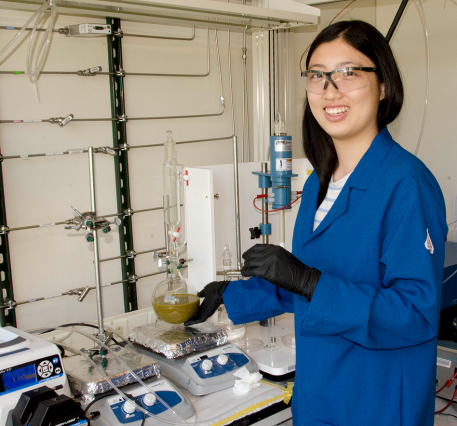There are already products in the market that include graphene, such as paintings or batteries that load quickier. But the main applications of graphene, according to researchers, are still to come.
15 july 2016
It conducts electricity better than any other known material, it is very resistant it does not break, is flexible and transparent. Graphene is the material of the future according to the new published in El Mundo newspaper.Tomás Palacios, professor in Electronic Engineering at the MIT, explains that two-dimensional materials such as graphene, that is, those that are extremely thin since they are only a few atoms thick, could be key so that engineers get to develop in the future better devices and cheaper in their manufacturing.
“Current electronics, based on silicon, have very expensive manufacturing processes”, explains the full university professor of the Departent of Electronic Engineering and Computing Sciences in the MIT. There will be needed new materials with extraordinary properties and new procedures to manufacture them, since it is essential that its production is quick and cheap.
Since graphene was synthetised for the first time in 2014 (a finding for which the Russian researchers Andre Geim and Konstantin Novoselov got the Nobel Prize for Physics in 2010), scientists worldwide work in its new development and in a new generation of two-dimensional materials. Those will serve to complement graphene.
One hundred of two-dimensional materials
Around one hundred two-dimensional materials are already well-known and, according to Palacios, there are studies that suggest that they could reach a thousand. “New two-dimensional materials are constantly arising since the possible combinations have shot up”, affirms Francisco Guinea, researcher in the Madrid Institute for Advances Studies (IMDEA).
The hexagonal boron nitride, for example, is one of the best insulating elements known. It does not conduct electricity and, at the same time, it helps improving the properties of other two-dimensional materials Many prototypes are based on molybdenum disulphide, which is found in nature and holds properties similar to that of silicon. Another promising material is phosphorene or black phosphorus, which is “made of phosphorus atoms and which is very interesting in terms of manufacturing devices for night vision”, said Palacios. “Such materials allows us to expand the current uses of electronics, although I do not believe that we are going to quit using silicon“, he states.
The plan is to combine them: “for example, graphene is an ideal material to transmit electrical signs, but it does not work well when manufacturing transistors, or power switches which control electrical currents. That is, it transmit information very well but it is not good enough to control such information. That is when the molybdenum disulphide comes into play”, highlighted Palacios.
Applications
The market already offers some products which have graphene, such as paint, electronic ink, quickly-charged batteries or tennis rackets. But graphene’s main applications, according to researchers who work on its development, are yet to come. We hope for these materials -which hold unique electronic characteristics- give wat to unique electronic and optoelectronic devices. We do not simply aspire to a little improvement of certain aspects, but to a great improvement which may change technology”, explained Pablo Jarillo-Herrero, MIT researcher.
“I believe we will need to wait between 10 and 20 years for these materials to be more present, stated the physician Jarillo-Herrero. However, he finds it difficult to predict when graphene-based devices will be of general use for telephones and tablets, because “they do not only need to be good and work, but they have to be cheaper than other technologies”.















